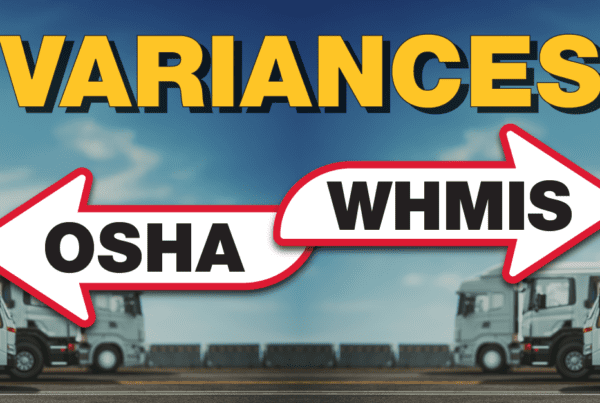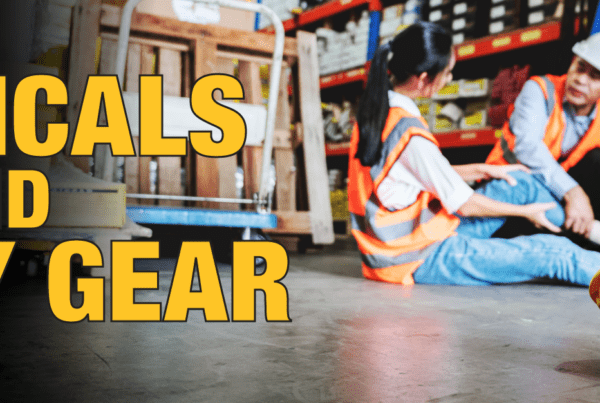According to OSHA the Most Frequently Cited Standards
The following were the top 10 most frequently cited standards in fiscal year 2012 (October 1, 2011 through September 30, 2012):
- Fall protection, construction (29 CFR 1926.501) [related OSHA Safety and Health Topics page]
- Hazard communication standard, general industry (29 CFR 1910.1200) [related OSHA Safety and Health Topics page]
- Scaffolding, general requirements, construction (29 CFR 1926.451) [related OSHA Safety and Health Topics page]
- Respiratory protection, general industry (29 CFR 1910.134) [related OSHA Safety and Health Topics page]
- Control of hazardous energy (lockout/tagout), general industry (29 CFR 1910.147) [related OSHA Safety and Health Topics page]
- Powered industrial trucks, general industry (29 CFR 1910.178) [related OSHA Safety and Health Topics page]
- Electrical, wiring methods, components and equipment, general industry (29 CFR 1910.305) [related OSHA Safety and Health Topics page]
- Ladders, construction (29 CFR 1926.1053) [related OSHA Safety and Health Topics page]
- Machines, general requirements, general industry (29 CFR 1910.212) [related OSHA Safety and Health Topics page]
- Electrical systems design, general requirements, general industry (29 CFR 1910.303) [related OSHA Safety and Health Topics page]
The following are the standards for which OSHA assessed the highest penalties in fiscal year 2012 (October 1, 2011 through September 30, 2012):
- Fall protection, construction (29 CFR 1926.501) [related OSHA Safety and Health Topics page]
- Scaffolding, general requirements, construction (29 CFR 1926.451) [related OSHA Safety and Health Topics page]
- Control of hazardous energy (lockout/tagout), general industry (29 CFR 1910.147) [related OSHA Safety and Health Topics page]
- Machines, general requirements, general industry (29 CFR 1910.212) [related OSHA Safety and Health Topics page]
- Powered industrial trucks, general industry (29 CFR 1910.178) [related OSHA Safety and Health Topics page]
- Ladders, construction (29 CFR 1926.1053) [related OSHA Safety and Health Topics page]
- Electrical, wiring methods, components and equipment, general industry (29 CFR 1910.305) [related OSHA Safety and Health Topics page]
- Process safety management of highly hazardous chemicals (29 CFR 1910.119) [related OSHA Safety and Health Topics page]
- Hazard communication standard, general industry (29 CFR 1910.1200) [related OSHA Safety and Health Topics page]
- Electrical systems design, general requirements, general industry (29 CFR 1910.303) [related OSHA Safety and Health Topics page]
Learn about ICC’s Plant Audits »
These violations can lead into major fines. The size of your company does not matter to OSHA. These facts and figures are on the OSHA.gov website.
Top Enforcement Cases Based on Total Issued Penalty
| Company | Issuance Date | Total Penalty |
| BP Products North America | 10/29/09 | $81,340,000 |
| BP Products North America | 9/21/05 | $21,364,500 |
| IMC Fertilizer/Angus Chemical | 10/31/91 | $11,550,000 |
| Imperial Sugar | 7/25/08 | $8,777,500 |
| O&G | 8/3/10 | $8,347,000 |
| Samsung Guam, Inc. | 9/21/95 | $8,155,000 |
| Dayton Tire | 4/18/94 | $7,490,000 |
| Keystone Construction Maint. | 8/3/10 | $6,623,000 |
| Phillip 66/Fish Engineering | 4/19/00 | $6,395,200 |
| Hercules, Inc. | 4/8/93 | $6,328,000 |
| Arcadian | 1/27/93 | $5,085,000 |
| E. Smalls Painting | 6/3/94 | $5,008,550 |
| Eraser Paper | 9/17/91 | $5,008,550 |
| Decoster Egg Farms | 7/12/96 | $3,555,500 |
| ARCO Chemical | 1/3/99 | $3,481,300 |
| McCrory Stores | 11/7/91 | $3,188,000 |
| IBO | 5/11/98 | $3,133,100 |
| BP North America, Inc. | 3/8/10 | $3,042,000 |
| Shell Oil Chemical Co. | 11/22/94 | $3,017,000 |
| Union Carbide | 9/12/91 | $2,809,500 |
So, do I have your attention now? I should, if not maybe you should rethink your safety program. Most safety programs are reactive, rather than proactive. Similar to the gun control debate going on currently in the U.S.A., law makers and others scream for more laws after an incident, rather than looking at we already have in place. It’s the old get rid of the perceived threat, rather than what caused it in the first place. It’s like taking the slingshot from the child, which you probably gave them, after they broke the window. What you should have done is given them the ground rules and taught them the safe way to use the slingshot in the first place.
Back to safety programs and how they really should work. Safety programs should be interactive with the employees and management. Employees should have the ability to influence safety and how affects them and the company. One way of that is a safety committee that has an impact on safety and maintaining a safe work environment. Do you encourage employees to be safe out of work? Employees are twice as likely to be injured at home as they are at the workplace. Do you “preach safety” or do you “live safety”? Safety must be not only for the employees, but for management and especially senior management. The safest companies follow a safety process rather than a safety program. Safety process has everyone being their own “safety manager” and responsible for their own safety, rather than a safety program where the safety manager directs the others in safety. Everyone, including office staff and sales should be involved in maintaining a safe working environment.
Office and sales people are just as likely to get hurt in a slip, trip and fall as the employee in the warehouse or out in the field. Employees in the office or sales can have ergonomic issues or strains from lifting improperly. As you can see there is more to safety than meets the eye.
Another integral part of safety is the reporting of near misses or incidents. Do you encourage employees to report near misses or dangerous situations? Can they do so without reprisal? Near misses should be examined as a way to eliminate hazards or hazardous predicaments that may turn into an incident or accident. Most accidents, but not all, are preventable. When investigating accidents, you should not try to determine fault, but what happened so any further similar situations can be prevented.
This article started as what the frequently cited standards and some of the heavier fines levied by OSHA. But what about other costs associated with safety? If your company is a 10% profit margin company, then an accident or incident of say $1000 is like a loss of $10,000 in sales. The immediate cost of an accident or incident may be visible, but what about the hidden costs?
Hidden costs of accidents include; time spent by management, HR and supervisors investigating and filling out paperwork on the accident, damage to equipment, damage to product, overtime to employees and additional stress to employees filling in for the injured employee, time loss by employees discussing what occurred instead of working, morale issues and even the hiring of a temporary or new employee to replace the injured employee, or even the retraining of an employee to fill in can cause a loss of production. The time that equipment is down for repairs and the associated costs of those repairs to damaged equipment or product. Hidden costs can run three to ten times the amount of the direct costs and it all comes out of the bottom line.
The one part we didn’t truly examine above is the morale of the employees at an “unsafe” workplace and what type of employee you are able to recruit to work there. That is something to consider when you are “doing what it takes to get the job done.” Employees whose morale drops are more likely to call in sick, get injured and leave the company. When you look at all the factors included in this article, fines become just one small part of the equations. The fines that can be levied are steep, but lawsuits and lawyers cost a lot more than just money. They can affect your reputation in the industry and in your community.
What is the real safety message your company is sending to the employees?






 ICC USA
ICC USA ICC Canada
ICC Canada
A few years ago, I visited a supplier to try to resolve some quality and supply issues. The visit resulted in me being offered the job of sorting what he described as “The mess I have created” out. Within the first month, I was electrocuted through no fault of mine – it was industrial negligence caused by his management style and very nearly lost my life. The incident was fraudulently reported to avoid prosecution. In reality, this guy was an industrial hooligan with a very suspect record of which I was unaware at the time. Before he eventually made me redundant (because I believe I had uncovered some irregularities)I managed to reinstate Health & Safety standards, the QC/QA system and actually save the company about £350k as a result,returning it to profitability. He had only seen the “price” of operating properly – not the actual cost.